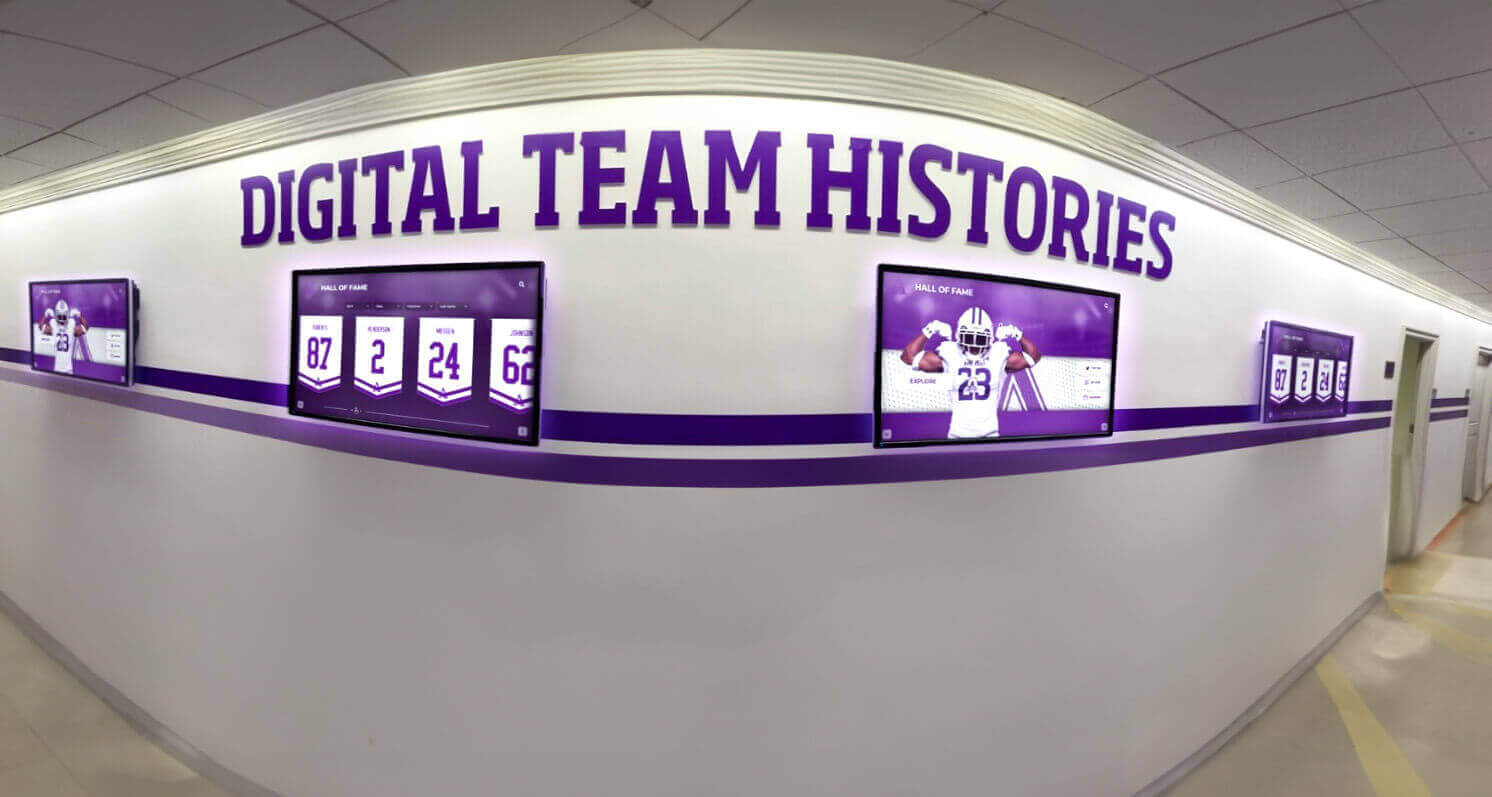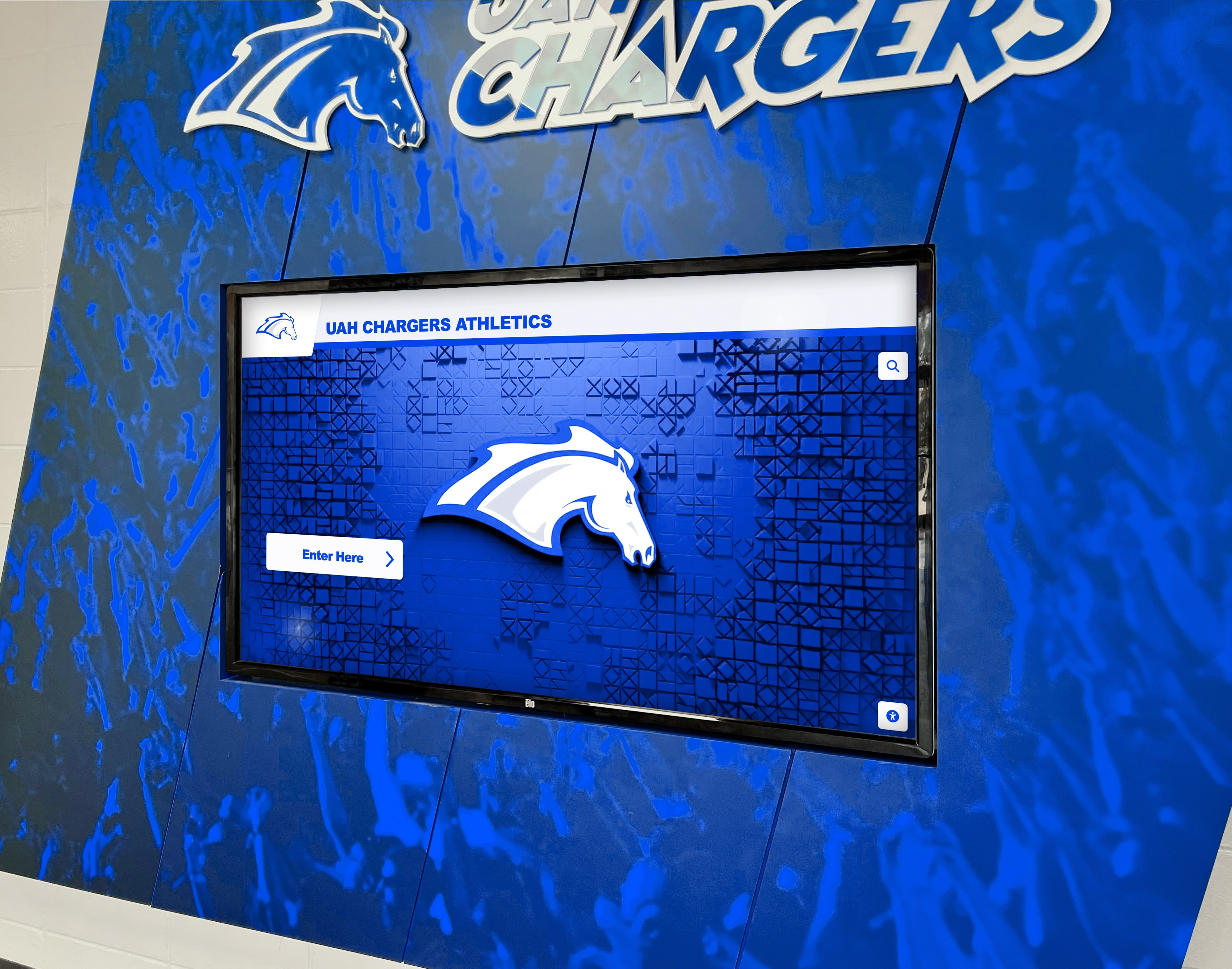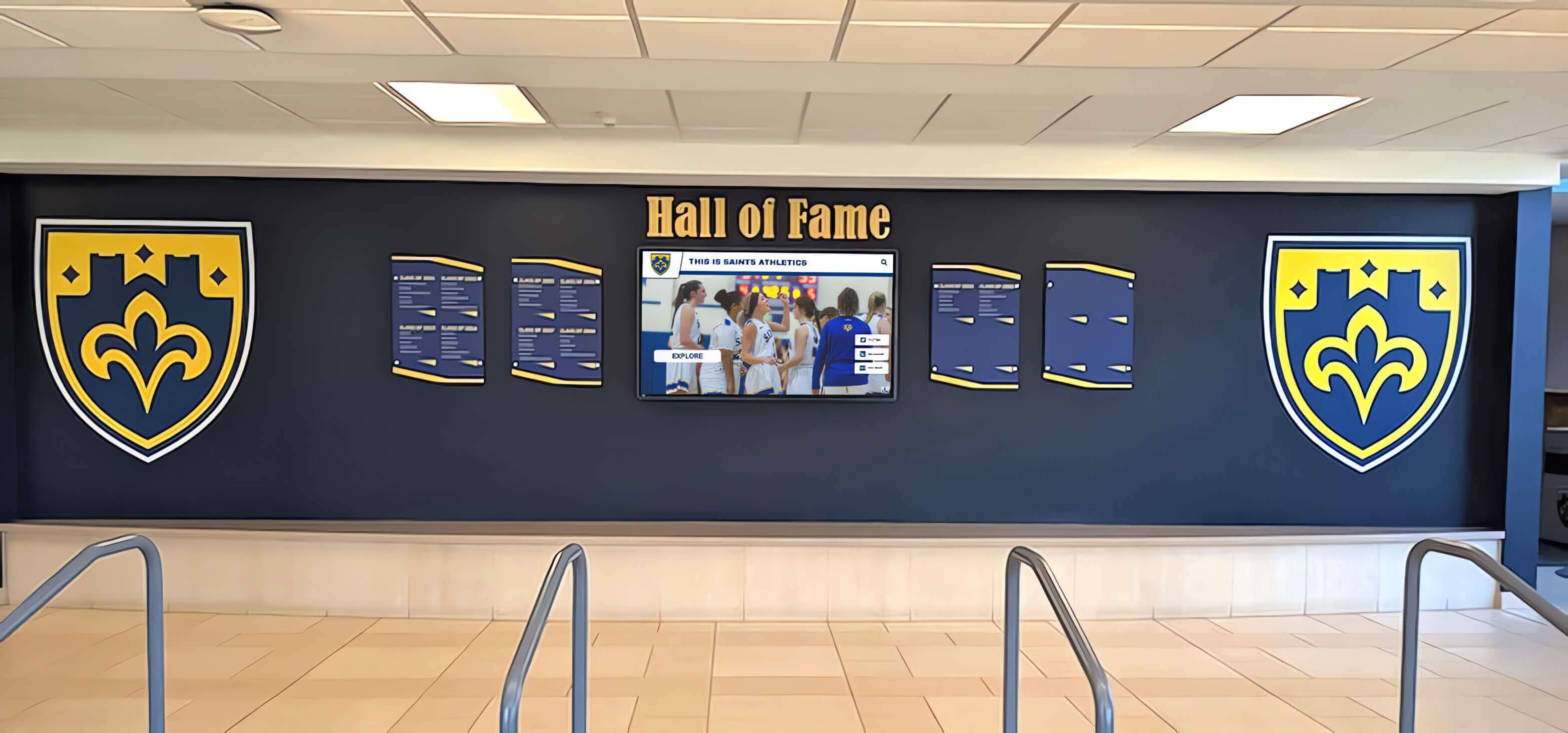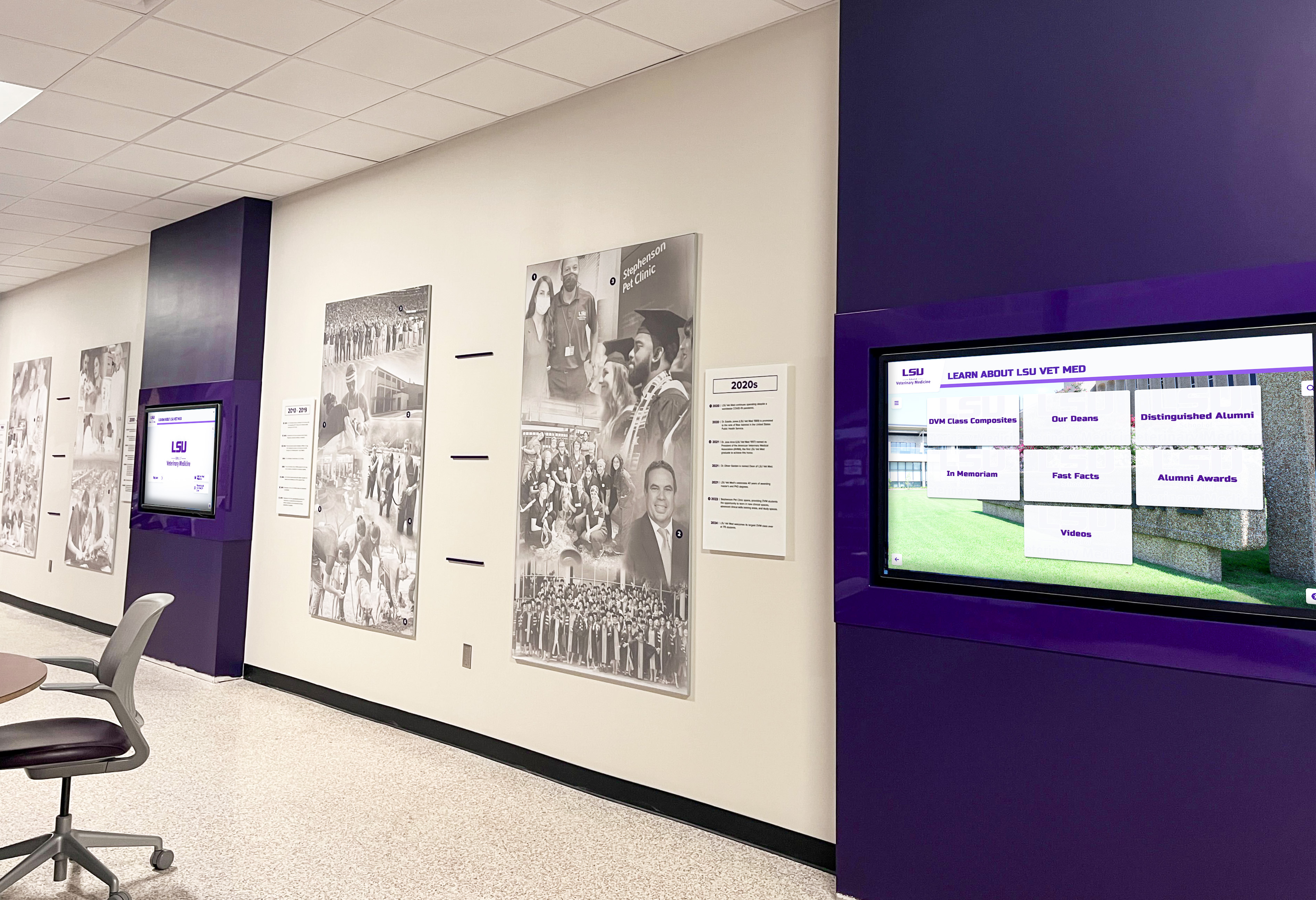Key Takeaways
Discover how statewide hall of fame programs celebrate athletic, academic, and cultural achievements across entire states. Learn about selection criteria, implementation, and modern recognition solutions.
Understanding Statewide Hall of Fame Programs
Statewide halls of fame differ significantly from institutional or local recognition programs in scope, prestige, and operational complexity.
The Purpose and Significance of State-Level Recognition
State halls of fame serve multiple critical functions within their regions. They create unified recognition standards acknowledging the highest achievements across diverse communities, preserve state athletic and cultural heritage that might otherwise be lost to time, inspire citizens throughout the state by showcasing what excellence looks like, strengthen state identity and pride through collective celebration of achievement, and provide educational resources documenting state history through the lens of exceptional individuals and accomplishments.
Unlike institutional halls of fame that honor excellence within specific schools or organizations, statewide programs establish recognition thresholds representing the absolute best across entire populations. This exclusivity makes state hall of fame induction among the highest honors individuals can receive for their contributions to state athletics, culture, or public life.
The prestige associated with statewide recognition creates powerful motivation for athletes, coaches, educators, and community leaders. Many individuals who have achieved success at national or international levels cite state recognition as among their most meaningful honors because it represents acknowledgment from their home communities and fellow state residents who witnessed their journeys firsthand.

Common Types of Statewide Hall of Fame Programs
States typically maintain multiple hall of fame programs honoring different achievement domains:
Athletics and Sports Recognition
State sports halls of fame represent the most common statewide recognition programs. These institutions honor athletes who achieved exceptional success while representing their states, coaches whose programs produced sustained excellence and developed champion athletes, teams that achieved remarkable championship success or represented milestones in state sports history, sports administrators and officials who advanced athletics throughout the state, and sports media professionals who documented and promoted state athletics across generations.
Many states maintain separate halls of fame for high school athletics and collegiate/professional sports, recognizing the distinct achievement levels and selection criteria appropriate for each category. Some states also create sport-specific halls of fame for particularly prominent activities like football, basketball, or baseball where achievement volume justifies dedicated recognition.
Academic and Educational Excellence
States increasingly recognize outstanding contributions to education through dedicated halls of fame celebrating teachers whose innovative methods or exceptional dedication transformed countless student lives, administrators and educational leaders who improved state education systems, researchers and scholars whose work brought distinction to state universities and institutions, and education advocates who advanced educational opportunity and quality throughout their states.

Arts, Culture, and Public Service
Comprehensive state recognition extends beyond athletics and academics to honor artists, musicians, writers, and cultural figures whose work enriched state cultural life, public servants who contributed significantly to state governance or community welfare, business leaders whose enterprises strengthened state economies and communities, and military veterans who served with exceptional distinction while representing their states.
These diverse recognition categories collectively document state heritage across all achievement domains, ensuring that excellence in any field can receive appropriate acknowledgment.
Historical Evolution of State Recognition Programs
Most statewide halls of fame originated during the mid-20th century when states began systematically preserving their athletic and cultural heritage. Early programs typically featured physical museums with artifact displays, trophy collections, and plaque walls listing inductees. These facilities often struggled with funding challenges, limited accessibility outside state capitals, physical space constraints as inductee numbers grew, and difficulty keeping displays current and engaging for modern visitors.
The digital revolution has fundamentally transformed statewide recognition. Modern programs increasingly leverage technology to extend their reach beyond physical locations, provide comprehensive access to historical information, create engaging multimedia experiences, reduce long-term operational costs, and maintain currency with contemporary communication preferences.
Many established state halls of fame now operate hybrid models maintaining prestigious physical facilities while substantially expanding their reach through comprehensive digital platforms making their collections accessible to citizens throughout their states and beyond.
Selection Processes for Statewide Recognition
Maintaining the prestige and integrity of statewide halls of fame requires rigorous selection processes commanding broad respect.

Establishing Induction Criteria and Standards
Statewide recognition demands exceptionally high achievement thresholds distinguishing it from institutional honors. Common criteria elements include:
For Athletes:
- State championship achievements or individual state records
- All-American honors or national-level recognition
- Professional career success at highest competitive levels
- Sustained excellence across multiple seasons or years
- Historical significance within state sports context
- Character and sportsmanship standards befitting state representation
- Post-career contributions to athletics or community
For Coaches:
- State championships won and sustained program success
- Winning percentage and longevity thresholds
- Athletes developed who achieved state, national, or professional success
- Innovation and contributions advancing the sport
- Impact extending beyond individual school or organization
- Recognition from coaching peers and professional associations
For Contributors and Other Categories:
- Documented significant impact on state athletics, education, or culture
- Recognition or awards from relevant professional organizations
- Sustained contributions over extended time periods
- Influence extending beyond local or regional scope to state level
- Character and conduct consistent with representing state excellence
Criteria should balance quantifiable achievements with contextual factors like era of competition, resources available, and unique obstacles overcome. Selection committees benefit from detailed rubrics providing structure while allowing judgment about candidates whose accomplishments don’t fit neatly into preset categories.
Nomination and Selection Committee Structure
Effective governance requires diverse, representative selection bodies with clear procedures:
Committee Composition
Selection committees typically include representatives from multiple geographic regions ensuring statewide perspective, individuals with expertise in relevant achievement domains, former inductees or individuals familiar with state history, media members who have covered state achievements extensively, and state athletic association or relevant organizational representatives.
Geographic and demographic diversity prevents selection bias toward particular regions, schools, or achievement eras. Regular committee rotation maintains fresh perspectives while staggered terms preserve institutional memory and consistency.
Nomination Procedures
Most programs accept nominations from multiple sources including self-nomination by eligible individuals, nominations from organizations or institutions, recommendations from selection committee members, and public nomination processes allowing citizens to propose candidates. Clear nomination deadlines, required documentation, and submission formats ensure consistent candidate evaluation.
Many states have implemented digital nomination systems streamlining submission processes, maintaining comprehensive candidate databases, and enabling efficient committee review of supporting materials.
Addressing Common Selection Challenges
Statewide selection inevitably involves complex situations requiring thoughtful approaches:
Geographic Balance Concerns
States with concentrated population in particular regions may find nominations skewed toward metro areas where more individuals competed and media coverage proved more extensive. Committees should actively seek nominations from all regions while evaluating candidates based on achievement relative to available opportunities and competition levels of their eras.
Recency Bias Management
Selection processes naturally favor recent achievers whose accomplishments remain fresh in memory while historical figures may lack contemporary advocates. Many states address this by establishing historical achievement categories, creating dedicated committees researching past eras, or alternating between contemporary and historical induction classes.
Controversy and Character Considerations
Candidates with exceptional achievements but controversial aspects to their biographies create dilemmas for selection committees. Clear character standards established in advance provide guidance, though committees should retain flexibility for contextual judgment recognizing that standards and perspectives evolve across time.

Building and Operating State Hall of Fame Facilities
Physical facilities remain important for many statewide programs despite the digital transformation of recognition.
Physical Location and Facility Planning
State halls of fame face strategic decisions about physical locations balancing accessibility, symbolism, and operational practicality:
Location Considerations:
- Proximity to population centers maximizing visitor access
- Symbolic significance within state history or athletics
- Availability of adequate facility space for current and future needs
- Integration with complementary attractions creating tourism destinations
- Parking, public transportation, and accessibility for all visitors
- Economic development potential for host communities
Some states maintain facilities in capital cities for symbolic and governmental reasons, while others select locations based on existing sports venues, museums, or other complementary institutions. Increasingly, states recognize that digital platforms can extend reach regardless of physical location, reducing pressure to locate facilities at geographic centers.
Exhibition Design and Visitor Experience
Effective physical facilities create engaging experiences honoring inductees while educating visitors about state heritage:
Core Exhibition Elements:
- Comprehensive inductee recognition with photographs, biographical information, and achievement highlights
- Interactive displays allowing visitors to explore state sports history by era, sport, region, or theme
- Artifact collections displaying trophies, uniforms, equipment, and memorabilia
- Video presentations featuring historic footage, interviews, and documentary content
- Temporary exhibitions rotating regularly to encourage repeat visitation
- Educational programming connecting state history to broader cultural contexts
Modern facilities increasingly incorporate digital display systems alongside traditional exhibits, creating hybrid experiences combining physical artifacts’ tangible impact with digital platforms’ comprehensive storytelling capabilities and unlimited information capacity.
Sustainable Operating Models and Funding
Statewide halls of fame require substantial resources for facility maintenance, staff compensation, exhibition development, and ongoing operations. Sustainable programs typically combine multiple revenue sources:
Funding Mechanisms:
- State government appropriations providing baseline operational support
- Private fundraising from individuals, corporations, and foundations
- Admission fees where appropriate, though many states provide free access
- Gift shop revenue from branded merchandise and memorabilia
- Event hosting for recognition ceremonies, fundraisers, and community gatherings
- Sponsorship relationships with businesses seeking association with state heritage
Programs with diversified funding prove more resilient during economic downturns or changes in government priorities. Many states establish nonprofit foundations supporting hall of fame operations, enabling private fundraising while maintaining appropriate separation from government funding fluctuations.
Digital Transformation of Statewide Recognition
Technology has revolutionized how state halls of fame preserve heritage, engage citizens, and celebrate achievement.
Comprehensive Online Presence and Accessibility
Digital platforms extend state halls of fame reach far beyond physical facilities, making recognition accessible to citizens throughout states and enabling engagement from former residents living elsewhere.
Essential Digital Platform Features:
- Searchable databases including all inductees with comprehensive biographical information, achievement statistics, photographs, and video content
- Advanced filtering enabling visitors to explore inductees by sport, era, region, school, or achievement type
- Multimedia galleries showcasing historic photographs, video highlights, and audio interviews
- Interactive timelines visualizing state sports history and achievement evolution
- Educational resources suitable for classroom use documenting state history
- Social sharing capabilities enabling supporters to celebrate inductees broadly

Digital platforms eliminate physical capacity constraints that limit traditional facilities. Every deserving inductee receives comprehensive recognition regardless of physical display space, and programs can continually enhance content as new photographs, videos, or information become available.
Virtual Recognition Experiences and Engagement
Beyond static databases, innovative state halls of fame create engaging virtual experiences:
Interactive Features:
- Virtual facility tours enabling remote exploration of physical facilities
- Augmented reality experiences overlaying historic content onto current environments
- Documentary-style video series profiling inductees and exploring themes
- Podcast programming featuring interviews and historical storytelling
- Virtual induction ceremonies enabling broad participation when physical attendance proves limited
- Online communities connecting fans, former athletes, and history enthusiasts
These engagement approaches attract younger audiences who might not visit physical facilities but readily consume digital content, expanding hall of fame relevance across generational cohorts.
Many states have found that comprehensive digital platforms actually increase physical visitation rather than replacing it. Virtual engagement familiarizes citizens with inductee stories, inspiring subsequent in-person visits to see artifacts and experience facilities firsthand.
Integration with Modern Technology Platforms
Forward-thinking state halls of fame leverage emerging technologies enhancing recognition and engagement:
Technology Applications:
- Mobile applications providing portable access to complete inductee databases
- Integration with smart home devices enabling voice-activated historical queries
- Social media strategies meeting audiences on their preferred platforms
- Email marketing maintaining engagement between major events or announcements
- Analytics platforms measuring engagement patterns and optimizing content
- Content management systems simplifying ongoing maintenance and updates
Solutions like Rocket Alumni Solutions provide purpose-built platforms specifically designed for recognition programs with features addressing unique needs of halls of fame including achievement-specific organization, multimedia content management optimized for biographical storytelling, searchable interfaces enabling complex queries, and proven scalability supporting statewide inductee volumes.

Induction Ceremonies and Public Engagement
Annual induction ceremonies represent highlight events for statewide halls of fame, generating publicity, honoring new inductees, and engaging communities.
Planning Memorable Induction Events
Successful ceremonies balance formal recognition with celebration creating memorable experiences for inductees, families, and attendees:
Event Components:
- Formal program featuring speeches by dignitaries, previous inductees, or notable figures
- Individual inductee recognition with video presentations showcasing achievements
- Acceptance speeches allowing inductees to share reflections and gratitude
- Social reception enabling networking and celebration
- Media access facilitating coverage extending event reach
- Live streaming or recording for those unable to attend physically
Many states schedule induction ceremonies in conjunction with major sporting events, state championships, or other gatherings that naturally attract relevant audiences. Strategic timing maximizes attendance while creating synergy between recognition and ongoing state athletic or cultural activities.
Media Relations and Publicity
Statewide recognition generates substantial media interest when effectively promoted:
Media Strategies:
- Press releases announcing inductee classes with compelling biographical information
- Media kits providing high-quality photographs, video clips, and statistics
- Press conferences enabling direct media interaction with inductees
- Exclusive interview opportunities for major outlets
- Social media campaigns building anticipation and engagement
- Partnership with regional media outlets ensuring broad geographic coverage
Strong media relations extend recognition beyond those physically attending ceremonies, building public awareness of state heritage while honoring inductees through widespread acknowledgment of their achievements. Many newer inductees report that media coverage following state hall of fame induction often exceeds attention received during their active careers, demonstrating the enduring public interest in celebrating exceptional achievement.
Year-Round Programming and Community Engagement
Successful state halls of fame maintain public engagement beyond annual induction ceremonies through diverse programming:
Engagement Activities:
- Educational programs for schools teaching state history through athletic achievement
- Speaker series featuring inductees and experts discussing relevant topics
- Youth camps or clinics where inductees mentor aspiring athletes
- Historic landmark tours visiting sites significant in state sports history
- Fundraising events supporting operational sustainability
- Recognition displays at state championships and major events
These activities build constituencies supporting hall of fame sustainability while fulfilling educational missions documenting and sharing state heritage.
Best Practices for Modern Statewide Programs
State halls of fame implementing thoughtful strategies position themselves for long-term relevance and impact.
Balancing Tradition with Innovation
Established programs face inherent tension between preserving traditions that confer prestige and implementing innovations that maintain contemporary relevance:
Strategic Approaches:
- Maintain core recognition standards and selection rigor while modernizing communication methods
- Preserve ceremonial elements valued by inductees and traditions while adding programming attracting new audiences
- Keep physical facilities updated and well-maintained while investing equally in digital platforms
- Honor historical inductees prominently while ensuring contemporary achievers receive comparable recognition
- Respect traditional achievement categories while considering new recognition types reflecting evolving state culture

Programs that successfully navigate this balance maintain the credibility and prestige that make state recognition meaningful while ensuring accessibility and relevance for contemporary audiences and future generations.
Ensuring Geographic and Demographic Inclusivity
Statewide programs must actively work to represent entire states equitably:
Inclusion Strategies:
- Selection committees including representatives from all major geographic regions
- Proactive nomination outreach to historically underrepresented communities
- Recognition of achievements from smaller schools and communities alongside major metro areas
- Attention to gender equity ensuring female athletes receive recognition proportional to their achievements
- Consideration of athletes from all eras, not just recent decades when record-keeping improved
- Documentation of achievement context acknowledging different opportunities and resources across eras and communities
Inclusive recognition builds broader constituencies supporting programs while more accurately representing complete state heritage rather than narrow subsets receiving disproportionate attention.
Building Sustainable Financial Models
Long-term viability requires diversified funding and efficient resource allocation:
Financial Sustainability Approaches:
- Developing endowments providing investment income supporting ongoing operations
- Implementing membership programs creating recurring revenue and engaged supporter communities
- Securing multi-year sponsorship commitments from businesses seeking brand association
- Optimizing facility operations reducing energy and maintenance costs
- Leveraging digital recognition systems reducing long-term costs while enhancing capabilities
- Strategic partnership with state athletic associations, universities, or museums sharing resources
Programs that establish sustainable financial foundations weather economic challenges and governmental budget fluctuations while maintaining consistent operations supporting their recognition missions.
Leveraging Technology for Operational Efficiency
Modern technology reduces administrative burden while improving program quality:
Technology Applications:
- Nomination management systems organizing candidate information and streamlining committee review
- Content management platforms enabling efficient updates to websites and digital displays
- Customer relationship management tracking supporters, members, and engagement
- Analytics measuring program impact and informing strategic decisions
- Automation reducing repetitive tasks and freeing staff for high-value activities
Technology investments often generate returns through reduced labor costs, improved capabilities, and enhanced program effectiveness. Many state programs report that digital transformation has enabled them to accomplish more with lean staff while substantially expanding their reach and impact.

Case Studies: Successful Statewide Programs
Examining established state halls of fame reveals common success factors and innovative approaches:
State Sports Halls of Fame Leadership Examples
Many states have developed nationally recognized programs worthy of study:
States with particularly successful programs typically share common characteristics including clear, consistently applied selection criteria commanding broad respect, sustainable funding models combining multiple revenue sources, comprehensive digital platforms extending reach beyond physical facilities, inclusive selection processes representing entire states geographically and demographically, and strong community partnerships connecting programs to current athletics and education.
Programs that have successfully transitioned from traditional models to modern approaches demonstrate that change can enhance rather than diminish prestige when implemented thoughtfully with stakeholder input.
Innovation in State-Level Recognition
Progressive states continually experiment with new approaches to recognition and engagement:
Innovative Practices:
- Virtual reality experiences enabling immersive exploration of historic moments
- Youth advisory boards ensuring programming connects with younger generations
- Traveling exhibits bringing recognition to communities throughout states
- Integration with state tourism promotion attracting visitors
- Academic research partnerships documenting state heritage systematically
- Collaborative programming with institutional halls of fame creating comprehensive state recognition ecosystems
These innovations demonstrate that statewide programs can maintain traditional prestige while embracing contemporary methods that expand their reach and relevance.
The Future of Statewide Hall of Fame Programs
State halls of fame must continue evolving to remain relevant for future generations while preserving core missions.
Emerging Trends and Technologies
Anticipated Developments:
- Artificial intelligence enabling sophisticated searching and automated content generation
- Enhanced personalization allowing visitors to customize experiences based on interests
- Expanded multimedia with 360-degree video, virtual reality, and interactive timelines
- Integration with educational technology platforms reaching students in classrooms
- Enhanced data analytics measuring impact and optimizing engagement strategies
- Blockchain technology potentially verifying achievement credentials and memorabilia authenticity
States that thoughtfully adopt emerging technologies while maintaining focus on their core recognition missions will be positioned to serve future generations effectively.
Expanding Recognition Categories
As society evolves, state halls of fame may expand beyond traditional athletics:
Potential Expansion Areas:
- Esports and competitive gaming as these activities gain legitimacy and participation
- Academic competitions recognizing intellectual achievement comparable to athletic success
- Arts and creative achievement gaining recognition equal to athletics
- Public service and community contribution honoring those improving state life
- Entrepreneurship and innovation celebrating those advancing state economies
Thoughtful expansion requires establishing appropriate criteria and selection processes for new categories while maintaining the standards that preserve state recognition’s prestige and meaning.
Strengthening Educational Missions
State halls of fame increasingly emphasize educational purposes alongside recognition:
Educational Priorities:
- Curriculum resources helping teachers incorporate state history into classrooms
- Primary source archives preserving documents, interviews, and artifacts
- Oral history projects capturing inductee memories and perspectives
- Research support for scholars studying state history, athletics, and culture
- Youth programming inspiring next generations through connection to heritage
These educational dimensions ensure halls of fame contribute substantively to state cultural preservation while honoring individual achievement.

Conclusion: Preserving State Heritage Through Recognition
Statewide hall of fame programs serve essential functions preserving regional heritage, honoring exceptional achievement, and inspiring future generations to pursue excellence. These institutions represent more than collections of plaques and trophies—they embody state values, document cultural evolution, and maintain connections across generations through shared celebration of achievement.
The most successful state programs balance tradition with innovation, maintaining rigorous standards that preserve recognition prestige while embracing modern technologies and methods that expand accessibility and engagement. Whether operating established physical facilities or launching new digital-first initiatives, state halls of fame must continually evolve to remain relevant while staying true to core missions honoring excellence and preserving heritage.
Solutions like Rocket Alumni Solutions enable state programs to honor unlimited inductees with comprehensive biographical content, multimedia storytelling impossible with physical displays alone, and searchable databases making state heritage accessible to all citizens. These modern platforms address traditional limitations while creating engaging experiences that inspire contemporary audiences and preserve legacies for future generations.
For states developing new recognition programs or established halls of fame seeking to expand their reach and impact, thoughtful planning around selection processes, sustainable operations, and effective technology implementation creates foundations for long-term success. Digital recognition platforms now make it practical to honor excellence comprehensively while engaging citizens throughout states and beyond.
State halls of fame that successfully navigate the balance between preserving tradition and embracing innovation will continue serving vital functions honoring achievement, strengthening state identity, and inspiring future champions who will carry forward the legacy of excellence these programs celebrate. Learn more about comprehensive state recognition solutions at Rocket Alumni Solutions.

































